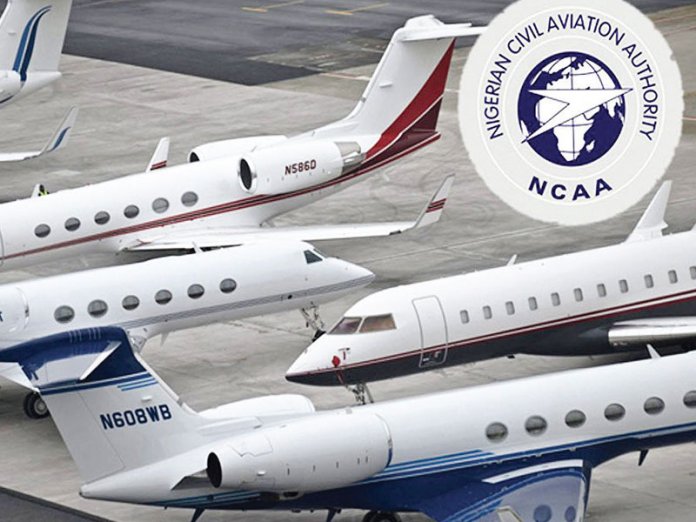Chinedu Eze
The recent cancellation and diversion of
flights by both domestic and international airlines due to the ...
harmattan haze early this month has brought to the fore, the importance
of the Nigerian Meteorological Agencies (NIMET), which has the
responsibility to provide on time whether information to airlines.
What was the agency doing during that
critical period? Was it able to predict the inclement weather before it
happened? Does the agency have necessary equipment?
THISDAY gathered that in the last seven
years, NIMET has enjoyed a good reputation for being accurate in its
weather forecast. Before that time, foreign airlines used to rely on
satellite and weather forecast from agencies outside Nigeria that
provided weather reports to flights going and leaving Nigeria.
But within that period, NIMET upgraded
its equipment; acquired Doppler weather radar and other critical
equipment that help to accurately predict the weather. Some years ago, a
British Airways pilot had confirmed to THISDAY that they now use NIMET
weather reports because they are accurate and very reliable.
General Manager in charge of research
and technical assistance to the Director General, NIMET, Dr. Mansur
Bako-Matazu, told THISDAY that the art of flying aircraft depends on
prevailing weather conditions and when the weather is not favourable it
can cause delays or outright cancelation of flights.
“We do give out forecast on daily basis through the Nigerian Airspace Management Agency (NAMA). On January 21 we made a forecast of seasonal rainfall and we mentioned the harmattan haze, noting that the weather would go below the standard minima.
“We do give out forecast on daily basis through the Nigerian Airspace Management Agency (NAMA). On January 21 we made a forecast of seasonal rainfall and we mentioned the harmattan haze, noting that the weather would go below the standard minima.
“But instead of foreign airlines diverting their flights from Lagos to Abuja, they chose to divert to another country.
“The haramttan haze was heavier in the
south because of humidity and moisture, which mix with the dust haze and
trigger fogs, especially in the morning.
“This is what reduced visibility in the southern part of the country,” he said.
“This is what reduced visibility in the southern part of the country,” he said.
Bako-Matazu, also said NIMET issues accurate weather report because it has improved its forecast with modern facilities.
He noted that the current Minister of
Aviation, Senator Hadi Sirika was doing everything possible to support
the agency and also to make the airports better, as more people now
prefer to travel by air because of the prevailing insecurity.
“The harmattan has cleared in the south
but it will take more time before it will clear in the north, but it is
not heavy. NIMET has Doppler radar, low level wind shear alert system
and many other equipment that have enhanced what we do to ensure that we
issue accurate weather reports,” he added.
Meanwhile, NIMET has acquired new radar components for the Doppler weather radar system, which will further enhance accurate weather report.
The agency also said that it intends to ensure 80 per cent total coverage of the country by June this year with the installation of the new components.
The Director General, NIMET, Prof. Sani Marshi, said the new equipment cost about N400 million.
Meanwhile, NIMET has acquired new radar components for the Doppler weather radar system, which will further enhance accurate weather report.
The agency also said that it intends to ensure 80 per cent total coverage of the country by June this year with the installation of the new components.
The Director General, NIMET, Prof. Sani Marshi, said the new equipment cost about N400 million.
He explained that NIMET was able to get
special allocation from the Bilateral Air Services Agreement (BASA)
arrangement through the intervention of the Minister of Aviation to fund
the project.
Mashi, disclosed that the components for
the radar system were delivered a fortnight ago and ferried to their
different locations for installations.
According to him, the components would be installed in Ikeja (Lagos Airport) and Kano Airport, stressing that as soon as the installation was done, the American company awarded the contract would then mount the radar on it.
According to him, the components would be installed in Ikeja (Lagos Airport) and Kano Airport, stressing that as soon as the installation was done, the American company awarded the contract would then mount the radar on it.
“When the contract was designed in 2007,
there was a designed problem. The radar was supposed to be mounted on
top of a tower. At Kano and Lagos locations, there were towers that were
erected in 1974. So, the contract was designed in such a way that
rather than constructing a new tower, those old towers of 1974 would be
used so to save more money. That was how the project was under-designed.
“So, when I took over, I discovered the project got stalled. The
contractors inspected the towers and came back with a report that the
towers were so weak and they can’t hoist anything because of the heavy
load.
“The weight of the tower is about 12
tonnes. So, they said it had to be because it was not part of the
original contract, they said there was nothing they could do.
“So, the components have been delivered
last week and they are in Ikeja and Kano. We are going to erect them.
Already they have delivered the towers in these two locations. So, as
soon as we finish the installation, which will just take about two
months, the Americans who were doing the contract will now come and
mount the radar on top.”
It is expected that NIMET should
continue to sustain the accuracy of its predictions by continuously
updating its equipment and personnel.





No comments :
Post a Comment